Drupal 10 vs Contentful: The Ultimate CMS Showdown
Are you struggling to decide which CMS platform will skyrocket your website's potential? You're not alone. In today's digital world, where content is king, choosing the right Content Management System (CMS) can make or break your online presence. That's why we're diving deep into a head-to-head comparison of Drupal 10 and Contentful – two powerhouses in the CMS arena.
Think about this: What does your website need to truly stand out?
Maybe it's the unparalleled flexibility and community support of an open-source giant like Drupal 10. Or perhaps, the sleek, modern approach of a headless CMS like Contentful, which promises seamless multi-channel content management. This isn't just a comparison; it's about finding the perfect match for your unique digital needs.
Ready to find out which CMS comes out on top for your specific requirements?
Let’s get started!
Background and Core Philosophy
Drupal 10
Origin and Evolution: Drupal's journey, starting as a humble message board in 2000, exemplifies innovation and adaptability. Today, Drupal 10 stands as a testament to this evolution, embodying advanced features and unparalleled flexibility.
Explore Drupal's History for a deeper understanding of its transformative journey or read our comprehensive guide on everything Drupal where we answer 75 FAQs about Drupal.
Core Philosophy: The ethos of Drupal revolves around creating an open, accessible, and highly customizable platform. It's designed not just as a CMS, but as a foundation for digital innovation and scalability, especially for complex, content-rich websites. This philosophy is reflected in its robust architecture and wide-ranging capabilities.
Target Audience and Typical Use Cases: Drupal 10 is an ideal choice for entities requiring a sophisticated, highly customizable CMS. It's particularly advantageous for sectors like government, higher education, and media, which demand intricate content structures and high traffic management.
Read how Drupal transformed these sectors or check out our Drupal projects.
Contentful
Origin and Evolution: Born in the era of multi-platform digital content, Contentful introduced a new approach to content management. It focuses on delivering content efficiently across diverse channels, embracing the headless CMS concept.
Core Philosophy: Contentful's API-first approach positions it uniquely as a content infrastructure rather than a traditional CMS. This design supports flexibility in content distribution but might require additional resources for customization and integration compared to a comprehensive solution like Drupal 10.
Target Audience and Typical Use Cases: Ideal for businesses looking for a straightforward solution to distribute content across multiple platforms, Contentful caters well to modern digital needs. However, it may fall short in handling complex, large-scale content structures as effectively as Drupal 10.
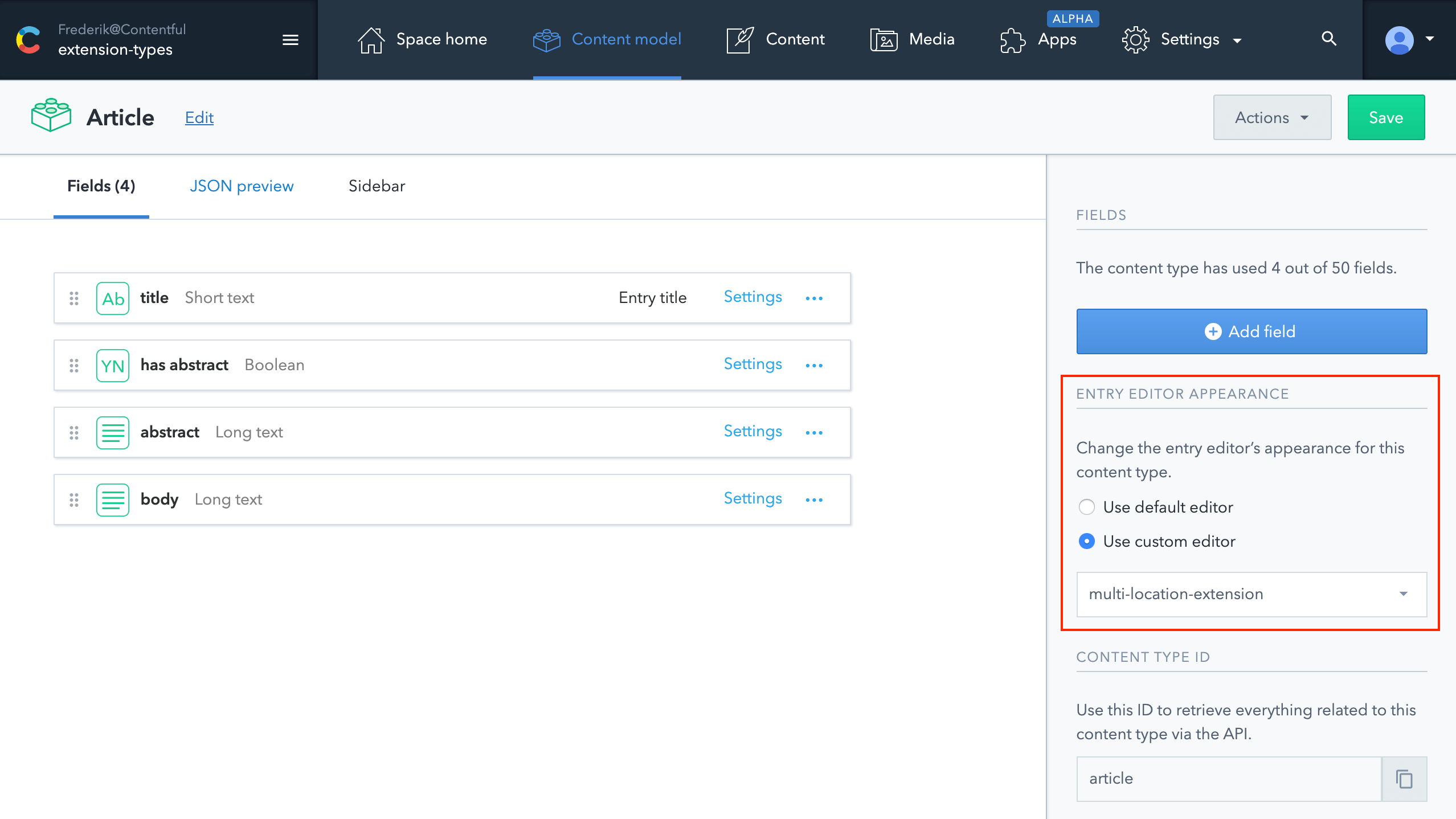
Features and Capabilities
Drupal 10
Key Features: Drupal 10 is a powerhouse of features designed for scalability, customization, and security. It offers extensive API support, advanced caching mechanisms for performance optimization, and a vast array of modules for tailored functionality. With its latest update, Drupal 10 enhances user experience with improved editorial workflows and mobile responsiveness.
Unique Selling Points: What sets Drupal 10 apart is its unparalleled flexibility in customization. It allows for intricate, bespoke website architectures, catering to diverse needs from e-commerce to content-heavy sites. The platform's strong emphasis on security, with regular updates and a dedicated community constantly improving its defenses, makes it a reliable choice for enterprises. Discover Drupal 10's Features.
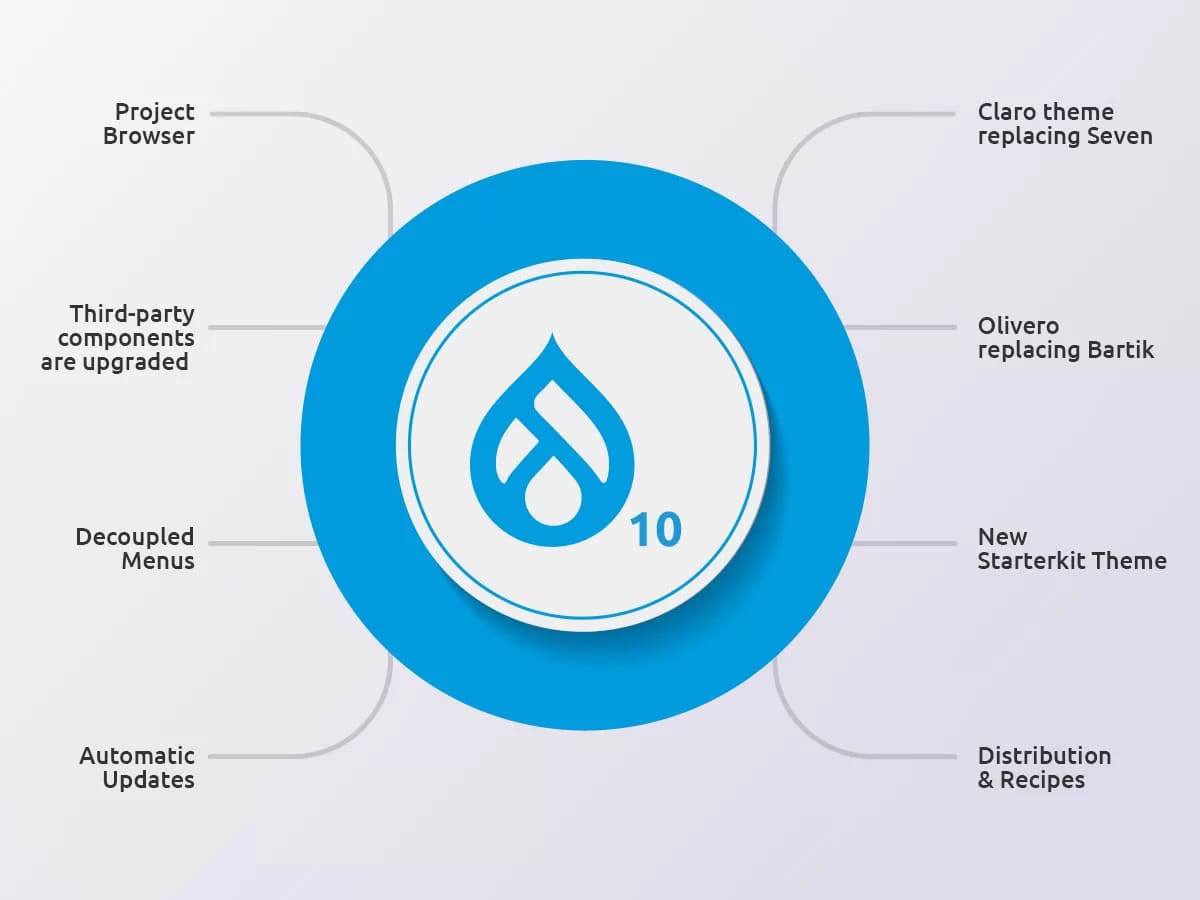
Contentful
Key Features: Contentful shines with its headless CMS capabilities, enabling content management and delivery across multiple channels from a single content hub. It provides robust APIs for smooth integration with various systems and supports agile workflows.
Unique Selling Points: Contentful's API-first approach facilitates a seamless multi-channel content strategy, especially beneficial for brands focusing on omnichannel customer experiences. However, it might require additional development effort for complex site structures, a domain where Drupal 10 naturally excels.
Ease of Use and User Interface
Drupal 10
User Interface Overview: Drupal 10 has made significant strides in improving its user interface, making it more intuitive and user-friendly. The administrative experience is streamlined, with a customizable toolbar and a layout builder that offers drag-and-drop functionality.
Learning Curve and User Experience: While Drupal 10 has a steeper learning curve compared to some CMS platforms, its recent updates have significantly reduced complexity. The platform provides a more approachable experience for non-developers, and once mastered, it offers unparalleled control and flexibility. The vast community and extensive documentation further aid in easing the learning process.
Drupal 10 is the leading open-source CMS for design flexibility.
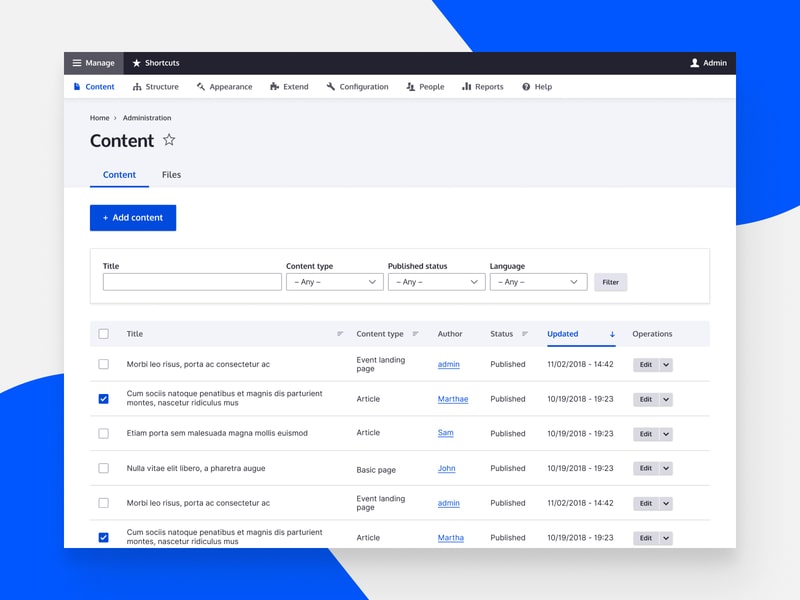
Contentful
User Interface Overview: Contentful features a clean, modern user interface focused on content management across channels. Its layout is designed for straightforward navigation, emphasizing content creation and distribution.
Learning Curve and User Experience: Contentful's headless nature and API-centric approach can pose a challenge for users unfamiliar with such systems. It requires a certain level of technical expertise, particularly for customizing and extending its capabilities. While suitable for developers, Contentful might not be as accommodating for users with limited technical skills.
Customization and Flexibility
Drupal 10
Customization Capabilities: Drupal 10's architecture is a haven for customization. With thousands of modules and themes, it empowers users to tailor every aspect of their website. Whether it's integrating complex functionalities or crafting unique user experiences, Drupal 10's extensibility is unmatched.
Case Studies or Examples: Many renowned organizations have leveraged Drupal 10's customization capabilities for their websites. For instance, the Australian Government's official website showcases Drupal 10's potential in managing complex content structures and providing a high level of security and accessibility. Drupal's advanced security and scalablitiy has made the CMS a favorite for enterprises and organizations that have complex website requirements -- and governments like the Australian government are adopting Drupal widely.
Contentful
Customization in Content Modeling and Integration: Contentful offers a flexible content modeling system and easy integration with various APIs and third-party services. Its headless nature allows for the freedom to design the front end without constraints.
Case Studies or Examples: Contentful's versatility is evident in the digital presence of companies like Urban Outfitters, which uses Contentful to manage and deliver content across multiple platforms, demonstrating its strength in content distribution. However, it may require additional development resources compared to Drupal 10's out-of-the-box solutions.
Scalability and Performance
Drupal 10
Analysis of Scalability for Large-Scale Projects: Drupal 10 is renowned for its scalability, handling high traffic volumes and complex, large-scale projects with ease. It's engineered to grow with your business, ensuring that your website performs efficiently regardless of the amount of traffic or the complexity of the content.
Real-World Example: A prime example is the Weather.com website, which seamlessly handles massive amounts of traffic and data, powered by Drupal's scalable architecture. This illustrates Drupal 10's capability to support high-demand sites while maintaining optimal performance. Explore how Weather.com utilizes Drupal.
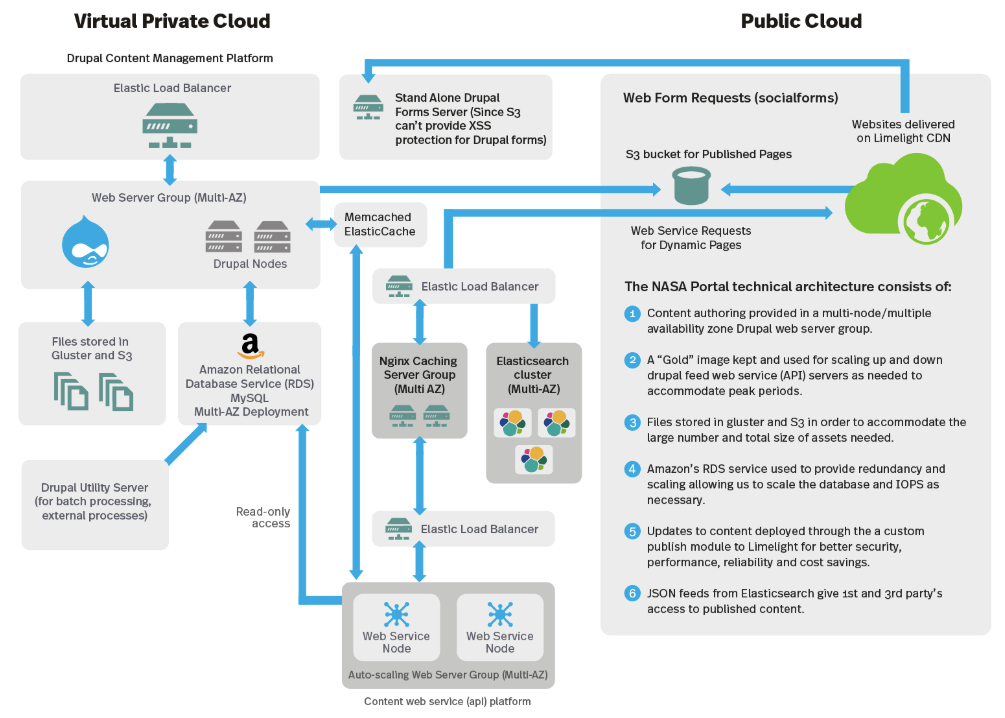
Contentful
Cloud-Native Scalability Features and Benefits: Contentful, with its cloud-native structure, offers scalability, particularly in content distribution across various platforms. While it efficiently manages content scalability, it may require additional consideration for handling high-traffic websites, especially those requiring complex data integration.
Case Study: Companies like Bang & Olufsen use Contentful to manage their global digital footprint, demonstrating Contentful's capability to scale content management across different regions and platforms. However, for more complex backend operations, Drupal 10's comprehensive features could offer a more robust solution.
Security and Reliability
Drupal 10
Security Features and Community Support: Drupal 10's commitment to security is unparalleled. With a dedicated security team and a proactive approach to vulnerabilities, it offers robust protection layers. Regular updates and a vigilant community contribute to maintaining high-security standards, making it a trusted choice for websites with sensitive data.
Recently the European Commission bug bounty program began funding Drupal as an investment in its entities.
Drupal’s security ensures:
- User Access Control
- Database Encryption
- Information sharing via security reports
- Auto-update and core validation work in partnership with GitHub
- Prevention of malicious data entry
- Mitigation of Denial of Service (DoS) attacks
- Patching of issues before they’re exploited
Real-World Example: The security and reliability of Drupal 10 are evident in its widespread adoption by government agencies, including the U.S. Department of Energy, which requires stringent security measures. Drupal's ability to meet such high-security demands showcases its reliability. Learn about Drupal's security.
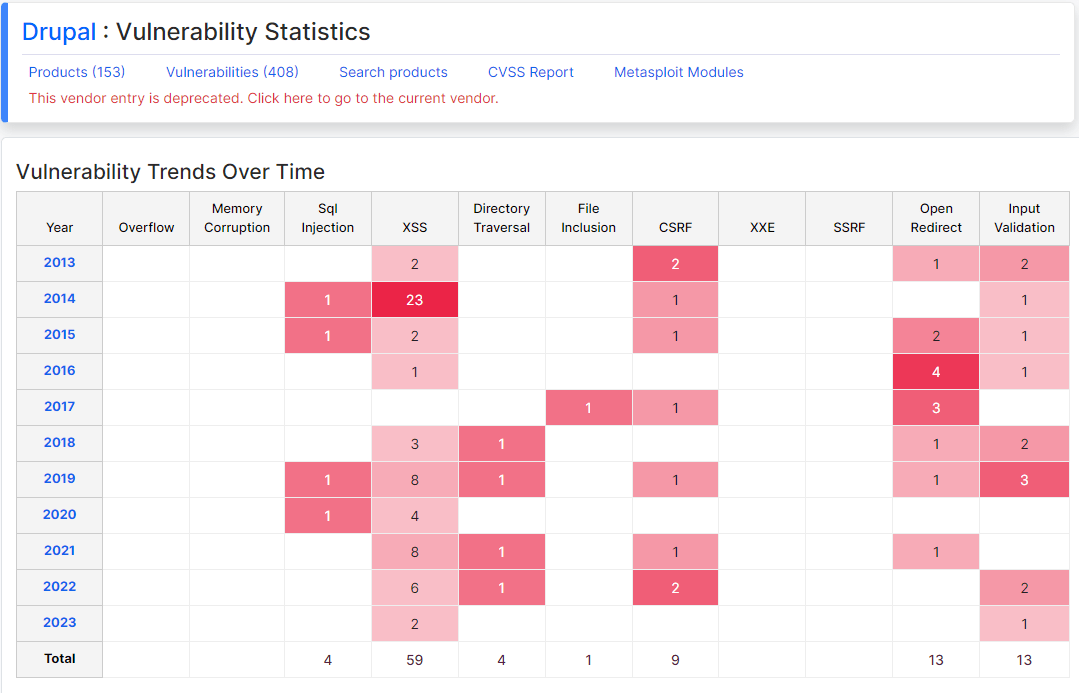
Contentful
SaaS Model Security and Infrastructure Management: Contentful, as a SaaS platform, provides a secure environment with its managed infrastructure. It ensures regular updates and security patches. However, being a cloud-native solution, the control over security customization is less compared to Drupal 10, which might be a crucial factor for websites with specific security needs.
Community Support and Ecosystem
Drupal 10
Overview of Community Resources and Support: Drupal 10 benefits from one of the most vibrant and supportive communities in the CMS world. This global community contributes to the continuous improvement of the platform through modules, themes, and distributions. There are extensive resources for learning and support, including forums, documentation, and regular meetups and events. This community-driven approach not only accelerates problem-solving but also fosters innovation and knowledge sharing.
Example of Community Contribution: The Drupal community has been instrumental in developing solutions for various challenges, such as accessibility and multilingual support, ensuring that Drupal websites cater to diverse user needs. Explore the Drupal Community.
Contentful
Overview of Community and Documentation Resources: Contentful has a growing community and provides adequate documentation, tutorials, and forums. As a relatively newer platform, its community is still expanding. Contentful organizes community events and offers a platform for developers to share their experiences and solutions, but the level of community engagement and resource availability is not as extensive as Drupal's.
Pricing and Total Cost of Ownership
Drupal 10
Breakdown of Costs: Drupal 10, being an open-source platform, does not require license fees, making it an economically attractive option. However, the total cost of ownership includes considerations for hosting, development, and maintenance. The extensive Drupal community and the abundance of free modules can significantly reduce development costs.
Cost-Efficiency Example: Drupal's cost-effectiveness is evident in its adoption by non-profits and educational institutions, where budget constraints are a significant factor. The flexibility in hosting options and the ability to scale as needed allow for efficient budget management.
Contentful
Subscription Model and Pricing Tiers: Contentful operates on a subscription-based model with different pricing tiers depending on the scale and requirements of the project. While it offers a free tier for smaller projects, larger implementations can become costly, especially when considering the need for custom development and integrations.
Consideration for Larger Projects: For enterprises, the cumulative cost over time with Contentful’s subscription model can be substantial. In comparison, Drupal 10's open-source nature and the one-time investment in custom development can be more cost-effective in the long run.
Real-world Use Cases and Success Stories
Drupal 10
Detailed Case Studies Showcasing Successful Implementations: Drupal 10's versatility is reflected in its wide range of successful use cases. From large government websites to top universities and global media outlets, Drupal 10 has been the CMS of choice for its scalability, security, and customization capabilities.
Highlighting a Success Story: One notable example is the University of Oxford's website. The site showcases Drupal 10's ability to manage complex, hierarchical content structures while providing a user-friendly experience. This implementation underlines Drupal 10's suitability for academic institutions that require robust, flexible, and accessible web solutions. Read more about Oxford's experience with Drupal.
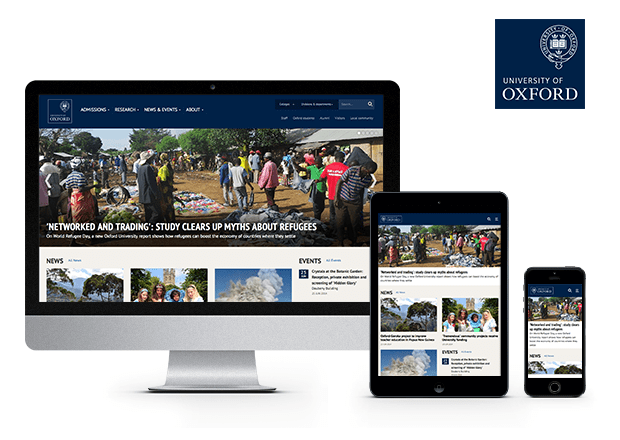
Contentful
Examples of Successful Multi-Channel Content Management: Contentful's strength lies in its headless approach, which has been effectively utilized by various brands to streamline their content across multiple channels. It offers flexibility in how content is presented across different platforms.
Case Study: An example of Contentful’s effectiveness can be seen in the digital strategy of a global lifestyle brand, which leverages the CMS to ensure consistent content delivery across web and mobile platforms. This case study exemplifies Contentful's ability to provide a cohesive content experience in a multi-platform environment.
Drupal 10 vs Contentful: Pros and Cons
Drupal 10
Advantages:
- Customization and Flexibility: Unmatched ability to customize and extend functionality to meet diverse needs.
- Scalability: Excellently handles high traffic and complex content structures.
- Security: Robust security features and a dedicated community for constant updates.
- Cost-Effectiveness: Open-source with no licensing fees, leading to potentially lower long-term costs.
Limitations:
- Learning Curve: Steeper learning curve, particularly for those new to Drupal or open-source CMS.
- Resource Intensity: May require more resources for initial setup and customization.
Contentful
Advantages:
- Headless Architecture: Ideal for multi-channel content management and distribution.
- User-Friendly Interface: Clean and modern interface, particularly appealing to content creators.
Limitations:
- Cost: Can be expensive for larger implementations due to its subscription model.
- Technical Expertise: Requires a certain level of technical skill for custom development and integration.
Choosing the Right CMS for Your Needs
Choosing the right CMS is a decision that should be tailored to your specific business needs, technical capabilities, and long-term digital strategy.
Guidance on Assessing Business Needs:
- Technical Requirements: Assess the complexity of your website. Do you require extensive customization or a straightforward content distribution system?
- Scalability: Consider your growth projections. Will your chosen CMS be able to scale accordingly?
- User Base: Understand your team's technical expertise. A CMS with a steep learning curve might require additional training or hiring skilled personnel.
Factors to Consider:
- Budget: Evaluate the total cost of ownership, including development, maintenance, and potential subscription fees.
- Long-term Goals: Align your CMS choice with your long-term digital strategy. Can the CMS adapt to future technological advancements and changing market needs?
Related: (Guide) A Comprehensive Guide to CMS Requirements in 2023
Conclusion
Drupal 10 and Contentful each have their unique strengths and ideal use cases. Drupal 10 stands out for its extensive customization capabilities, robust security, and cost-effectiveness, particularly for complex, large-scale projects. Contentful offers ease in multi-channel content distribution with its headless architecture, suitable for businesses focusing on content agility across various platforms.
Ultimately, the decision should be based on a careful evaluation of your specific requirements, resources, and objectives. Consider the long-term implications of your choice and how it aligns with your overall digital strategy.
Need expert consultation regarding your CMS needs? Contact us today.
